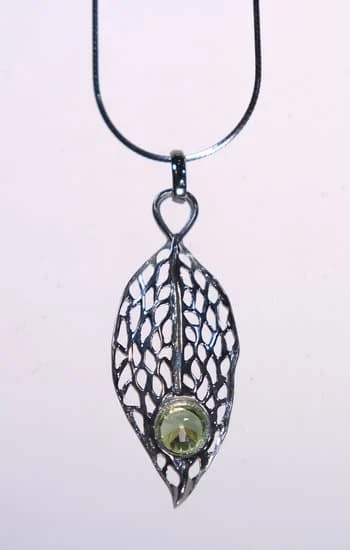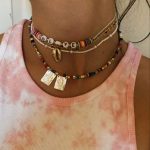When it comes to crafting exceptional jewelry, the art of stone setting plays a pivotal role. Knowing how to set stones in jewelry: prong, bezel, and more can be the difference between an ordinary piece and an extraordinary work of art.
Stone setting is not just about securely placing a gemstone into a metal frame; it is an intricate process that accentuates the beauty and brilliance of both the stone and the overall design. This technique impacts not only the aesthetics but also the longevity of your treasured accessory.
The significance of stone setting extends beyond mere decorative appeal; it’s fundamental for ensuring that gemstones remain securely attached to their settings over time. Improper techniques can lead to loose stones or even complete loss, while proficient settings enhance durability without compromising on elegance. The different approaches-from classic prong settings to modern tension ones-offer a wide array of options that cater to various tastes and functional needs.
Throughout this blog post, we will delve deeper into the fascinating world of stone setting in jewelry. We’ll explore essential methods such as prong and bezel settings, discuss more innovative techniques like pavé and tension settings, and examine hybrid styles that blend multiple approaches for unique results.
Whether you’re a seasoned jeweler or an enthusiastic beginner eager to learn more about this intricate craft, this guide aims to equip you with valuable knowledge on selecting and mastering the right setting methods for your creations.
Understanding Stone Setting
Stone setting is an intricate and vital aspect of jewelry making, where the jeweler secures gemstones into a metal framework. This practice not only influences the aesthetic appeal of a piece but also ensures that the stones remain securely in place over time. Jewelry artists need to be proficient in various stone-setting techniques to achieve both beauty and durability in their designs.
The role of a jeweler in stone setting goes beyond simply embedding a gemstone into a piece of jewelry. They must consider factors such as the type of gemstone, its cut and clarity, and the overall design aesthetics. The goal is to showcase the stone’s best features while ensuring it is held securely. Mastering skills like how to set stones in jewelry: prong, bezel, and more can define the quality and uniqueness of each piece crafted.
Different types of stones are used widely in jewelry-making, including diamonds, rubies, emeralds, sapphires, opals, and more. Each type of stone brings its own set of challenges for jewelers due to varying hardness levels on the Mohs scale and unique optical properties. For instance:
- Diamonds: Known for their hardness (10 on Mohs scale) and sparkle.
- Rubies: Prized for their vibrant color and durability.
- Emeralds: More delicate with inclusions that require careful handling.
- Sapphires: Available in multiple colors and relatively hard (9 on Mohs scale).
Jewelry designers must select appropriate settings based on these attributes to highlight each stone’s unique beauty while ensuring practical wearability.
Prong Setting
The step-by-step process of prong setting begins with measuring the gemstone to determine the correct size of the prong head. The jeweler then carefully positions the stone in place and gently bends each prong over its edges using specialized tools.
Precision is crucial at this stage to ensure that each prong is evenly spaced and securely grips the stone without causing damage. It’s essential to inspect the alignment from all angles to guarantee a symmetrical and balanced appearance.
One of the significant advantages of prong settings is their ability to highlight gemstones by allowing more light exposure, which enhances their brilliance. Additionally, this setting uses less metal than other types, giving a delicate and refined look to jewelry pieces. However, there are also drawbacks; for example, pronged stones can be more prone to snagging on clothing or other materials.
They may also need occasional maintenance to ensure that the prongs remain secure over time. Prong settings are best suited for durable gemstones like diamonds or sapphires that can endure such an open setting without cracking or chipping easily.
Whether exploring how to set stones in jewelry: prong, bezel, and more techniques offers a captivating insight into various methods used by jewelers globally. Among these techniques, prong settings stand out for their timeless aesthetic appeal while demanding careful attention during both creation and ongoing care stages.
Bezel Setting
A bezel setting offers a distinct and timeless appearance, enveloping the gemstone in a metal rim that extends slightly above the stone’s surface. This setting is favored for its ability to provide substantial protection to the gem while maintaining a sleek and modern look. The continuous metal edge around the stone, which can be either complete or partial (half-bezel), secures it firmly in place, making it an excellent choice for those who lead active lifestyles.
The step-by-step process of bezel setting begins with creating a precise metal strip that matches the circumference of the gemstone. The jeweler then shapes this strip into a ring that fits snugly around the stone’s girdle, ensuring no gaps exist between the metal and gem. Once properly aligned, the ring is soldered together to create a sturdy bezel.
The gemstone is placed inside this enclosure, after which the top edge of the bezel is carefully pushed over the stone’s edge using specialized tools, securing it firmly in place without damaging its surface. This technique requires meticulous craftsmanship to ensure a secure yet visually appealing fit.
One notable advantage of bezel settings is their protective nature; they shield gemstones from potential damage better than prong settings by covering more surface area. Additionally, bezels can make stones appear larger and are particularly suited for softer gems like opals or pearls that need extra safeguarding.
However, some may argue that bezels can obscure portions of certain stones’ brilliance compared to more open settings like prongs. Regardless, choosing how to set stones in jewelry: prong, bezel, and more-specific factors such as lifestyle needs and aesthetic preferences will guide you towards making an informed choice that’s best suited for your unique piece.
Channel Setting
Description of Channel Setting and How It Differs From Others
Channel setting is a sophisticated method where stones are set in a linear channel, creating a sleek and continuous row. Unlike prong or bezel settings that use metal claws or encasements to hold individual stones in place, channel setting sees two parallel metal walls holding the gemstones securely between them. This creates an uninterrupted flow of brilliance as the stones appear side by side without gaps or prongs interrupting their display.
This style suits jewelry pieces like eternity bands, tennis bracelets, and necklaces where the aesthetic aim is to present an unbroken line of shine. The channel setting also benefits from its ability to protect the edges of the stones, particularly helpful for more delicate gems that may easily chip if exposed.
Step-by-Step Process of Channel Setting
1. _Preparation:_ Start by designing and crafting the jewelry piece with precise measurements for the width and depth of the channel that will accommodate your specific stone dimensions.
2. _Cutting the Channel:_ Using specialized tools, cut a groove along the metal where the stones will sit. This step requires accuracy to ensure that each gemstone fits perfectly within its designated space.
3. _Stone Placement:_ Each stone is then carefully positioned into the channel one by one using tweezers or other precision instruments. Stones should be arranged with their table (top) facing up and seated flatly within the groove.
4. _Securing Stones:_ Once all stones are properly placed, gently press down on each side of the metal walls overhanging slightly onto the gem to lock them into place, without obscuring too much light entry.
Advantages and Disadvantages of Using Channel Setting
The primary advantage of using a channel setting is its secure nature; since no prongs are involved to snag on clothing or catch on objects, it is less likely for stones to come loose over time with regular wear. Moreover, this setting allows maximum light reflection from adjacent gems which helps amplify their collective sparkle-an effect highly desirable in luxury jewelry pieces.
However, there are some disadvantages as well. Crafting a perfect channel requires high precision and skill from jewelers due to its complexity in ensuring uniformity across all stone placements. Additionally, if any damage occurs (like bending or denting), repairs can be quite challenging as removing one stone might affect others nearby-increasing maintenance intricacies.
Best Types of Stones for Channel Setting
Diamond’s durability makes it ideal for channel setting due to its toughness which stands up well against potential impacts during regular wear-perfect for wedding bands or everyday bracelets. Additionally, hard gemstones such as sapphires and rubies thrive under this setup owing to their resistant properties against scratching or chipping.
Learning how to set stones in jewelry-prong, bezel, and more-is crucial here because understanding different types can help you make better decisions based on stone characteristics like hardness or cleavage tendencies when considering intricate techniques like channels trying lesser-known minerals could test limits beyond conventional methods delivering unexpectedly modern customizations.
Pavé Setting
The process of pavé setting begins with preparing the metal surface by drilling small holes where each stone will be placed. Skilled jewelers then insert tiny prongs around each stone to hold them securely in place. Each gemstone is meticulously set so that they lie flush with one another, minimizing gaps and maximizing brilliance.
Due to the precision required, pavé setting is often executed under magnification to ensure all details are perfect. If you’re learning how to set stones in jewelry: prong, bezel, and more styles like pav setting might require specialized tools and years of practice.
When considering the advantages and disadvantages of using pavé settings, its primary appeal lies in its ability to create a dazzling display without overwhelming the design with excessive metalwork. Because it’s possible to incorporate many small stones within close proximity, this setting type makes any piece shimmer with elegance while maintaining a delicate aesthetic.
However, due to the intricacy involved in arranging numerous tiny prongs around each stone, maintenance can be somewhat challenging-the smaller prongs may loosen over time. This means regular inspections are crucial to ensure all stones remain intact.
| Advantages | Disadvantages |
|---|---|
| Create a dazzling display | High-maintenance requirement |
| Minimal visible metal | Prongs may loosen over time |
| Makes pieces look elegant | Requires skilled craftsmanship |
For those interested in using pavé settings in their creations, it’s essential to choose stones that complement this technique well. Smaller diamonds or colored gemstones are typically best suited for pav applications due to their compatibility with close-set arrangements and their intense sparkle when grouped together. Larger stones would not achieve the same visual cohesion necessary for this specific aesthetic style and might also complicate the securing process given their weight and size factors.
Tension Setting
To achieve this striking look, jewelers follow a detailed step-by-step process. The first step involves precisely calibrating and measuring the stone to ensure perfect alignment with the metal band. Next, small grooves are meticulously cut into both sides of the band where the gemstone will be seated.
The gemstone is then carefully placed into these grooves while the ends of the band are compressed together, securing the stone through sheer tension. Finally, adjustments are made to ensure perfect stability and alignment, with jewelers often performing multiple stress tests to guarantee long-term durability.
Though tension settings offer remarkable visual appeal, they come with their own set of advantages and disadvantages. One significant advantage is their ability to showcase more of the gemstone compared to traditional settings like prong or bezel settings. However, this setting style requires extremely precise craftsmanship and is typically limited to harder gemstones like diamonds and sapphires due to their resistance to chipping under pressure.
| Step | Description |
|---|---|
| Measurement | Calibrating and measuring the stone for perfect alignment. |
| Grooving | Cutting small grooves into both sides of the metal band. |
| Placement | Seating and aligning the gemstone within these grooves. |
| Tension Application | Compressing metal ends together to secure the stone. |
Choosing suitable stones for tension setting is critical; typically harder stones such as diamonds or sapphires work best because they resist breaking under high pressure. Always consider factors like gemstone hardness when learning how to set stones in jewelry: prong, bezel, and more styles all have unique requirements but achieving a stable tension setting demands impeccable precision from skilled jewelers.
Flush Setting
Flush setting, also known as gypsy setting, is a method where the stone sits in a hole that is drilled into the metal surface, lying flush with the rest of the jewelry piece. This setting style provides a sleek and modern appearance, creating an almost seamless look by making the stone appear to be embedded into the metal.
One of its major advantages is that it offers robust protection to gemstones, reducing the risk of them catching on clothing or other objects.
Step-by-Step Process of Flush Setting
The process begins with selecting a suitable spot on the jewelry piece where you want to place your stone. A jeweler will then mark this position and use a drill bit to create an appropriately sized hole.
The key is ensuring that the hole matches both the width and depth of the gemstone being set. After drilling, a bur tool may be used to carve out a seat within this hole so that the stone can fit perfectly flush against it.
Next comes placing and securing the gemstone. The jeweler places the gemstone gently into its newly carved location, ensuring it fits snugly without gaps around its edges.
Depending on how to set stones in jewelry: prong, bezel, and more comparisons can help us understand that unlike prong settings which rely on small metal arms for security, flush settings depend entirely on compressing metal around the gem’s girdle (edge). Using tools such as bezel pushers or burnishers, jewelers press or rub over parts of the surrounding metal to lock in and hold down the stone tightly.
Advantages and Disadvantages of Using Flush Setting
One significant advantage of using flush settings lies in how discrete and streamlined appearances make them ideal for individuals who prefer minimalist designs. They offer added security due to low-profile nature; stones are less likely to become dislodged or damaged from incidental impacts compared to those set in higher-profile styles like prongs or bezels.
However, there are some drawbacks associated with using flush settings. One primary disadvantage is that they may not allow as much light through gemstones seated in such a manner-this could diminish their brilliance compared with more open settings like pavé or tension systems where maximum light interaction enhances sparkle effect considerably. Additionally, repairing or replacing stones within such meticulous housings might prove tedious work requiring specialized skill sets typically possessed by seasoned professionals only.
Best Types of Stones for Flush Setting
When considering stones best suited for flush setting applications-the hardness scale becomes pivotal factor determining overall success rates during implementation phases onwards into long-term wearability scenarios thereafter too altogether largely coinciding thus closely correlated therein criteria accordingly rendered optimized preferences towards harder minerals & gems inevitably given longevity purposes.
Diamonds rate highest recommendation noted here primarily based forthrightly observations concluding superior scratch-resistant properties alongside supplementary fortifications provided intrinsically versatile enough withstand daily usage strains closest flushing operations inherently entail embedding securely amidst steel/aluminum/precious alloys etc others further including sapphires/rubies likewise categorized similarly qualifying inclusions contemplate alike future endeavors transitions.
Cluster Setting
The process of cluster setting begins with creating a detailed layout plan for the stones. This step is crucial because each gemstone must be precisely positioned to ensure symmetry and optimum brilliance. The jeweler then carefully sets each stone using prongs or bezels, depending on the desired look and the type of gemstones used.
Regular inspections are performed throughout the process to guarantee that all stones are secure and aligned perfectly. Given its complexity, this type of setting demands exceptional skill and patience from the jeweler.
One significant advantage of the cluster setting is its ability to enhance smaller stones’ apparent size without compromising their individual beauty. However, like any other setting method, it has some drawbacks. Keeping track of multiple tiny stones can complicate maintenance efforts; regular checks are necessary to ensure none become loose over time. When considering how to set stones in jewelry: prong, bezel, and more designs including cluster settings should not be overlooked due to their stunning visual appeal.
| Advantages | Disadvantages |
|---|---|
| Enhances perceived size of small stones | More frequent maintenance required |
| Creates unique, dazzling designs | Complex and time-consuming process |
Hybrid and Innovative Settings
When it comes to jewelry design, innovation knows no bounds. Hybrid settings are a testament to this spirit of creativity, combining multiple stone-setting techniques into one exquisite piece.
For example, a ring might incorporate both prong and bezel settings to take advantage of the durability of a bezel while also allowing more light to reach the gemstone through strategically placed prongs. This amalgamation not only enhances the jewelry’s aesthetic appeal but also optimizes the security and showcase potential of each stone.
Examples of Innovative Settings
The world of contemporary jewelry is brimming with inventive designs that push conventional boundaries. Tension-prong hybrids merge modern minimalism with classic elements-tension provides the sleekness while prongs add an extra layer of security. Pavé-cluster combinations create dazzling surfaces where small stones seem to float in harmonious clusters, making a simple piece appear intricately luxurious. Such groundbreaking approaches require a deep understanding of how to set stones in jewelry: prong, bezel, and more-all working together seamlessly.
Benefits of Experimental Stone Setting
Opting for innovative or hybrid stone settings offers myriad benefits for both designers and wearers. These avant-garde techniques allow for greater customization, enabling jewelers to cater specifically to clients’ unique tastes and preferences. From an aesthetic perspective, these complex settings can make a piece stand out as uniquely beautiful and personalized art. Functionally, hybrid techniques often provide increased versatility in securing various types of gemstones while exhibiting them from different angles, thereby achieving optimal brilliance and durability.
Choosing the Right Setting for Your Jewelry
When it comes to choosing the right setting for your jewelry, several factors must be considered to ensure that the final piece is both beautiful and durable. Firstly, it’s essential to assess the type of stone you are working with, as different stones have varying hardness and fragility.
For instance, diamonds, known for their exceptional hardness, can withstand tension settings that might not be suitable for softer gemstones like opals or emeralds. Therefore, understanding how to set stones in jewelry: prong, bezel, and more is crucial as each setting offers distinct benefits appropriate for specific stones.
Another important consideration is the overall design and style of the jewelry piece. Prong settings are perfect for classic solitaire rings where maximum light exposure enhances a stone’s brilliance. In contrast, bezel settings offer a modern look with added protection by encasing the stone in metal-a great choice for more active wearers. Channel settings provide a streamlined appearance ideal for eternity bands or bracelets where multiple stones are aligned in a row without visible gaps.
Durability is also paramount when selecting your stone setting. For pieces intended for daily wear like engagement rings or wedding bands, opting for settings that provide extra security is advisable.
Bezel and flush settings offer excellent protection against accidental knocks and potential dislodgement of the stone. Additionally, consider hybrid settings if you aim to merge aesthetic appeal with functionality; these innovative designs often combine elements from various traditional settings to create unique and custom fits catered to individual needs or preferences.
By evaluating these factors-stone type, design aesthetics, and durability-you can make an informed decision on the best setting method. This not only ensures the longevity of your jewelry but also enhances its visual appeal suited to your personal taste and lifestyle requirements.
Maintenance and Care for Set Stones
Maintaining the beauty and security of stones in jewelry requires regular care, tailored specifically to the type of stone setting used. Each setting comes with its unique characteristics and demands specific attention to ensure longevity and luster. Here, we delve into how you can keep your prong, bezel, channel, pavé, tension, flush, and cluster set jewelry in pristine condition.
For prong settings, it’s vital to regularly inspect the prongs for any signs of wear or damage. Given that prongs hold the stone by wrapping around it, weakened or bent prongs may lead to loose or lost stones. Using a loupe or magnifying glass can help you see any issues clearly.
If you notice any discrepancies like misalignment or loosening, contact a professional jeweler immediately for repairs. Additionally, when learning how to set stones in jewelry: prong, bezel, and more, professionals often emphasize avoiding activities that could snag or bend the delicate prongs.
Bezel settings offer a more secure hold due to their encircling metal edge but still require diligent upkeep. Regularly clean your bezel-set jewelry with a soft brush to remove dirt and grime that can collect around the edges. Be cautious while polishing; excessive force can deform the metal lip keeping your stone secure. Always opt for gentle cleaning materials like non-abrasive solutions that won’t scratch either the metal or the gemstone itself.
Channel settings also need careful maintenance since they house stones between protective strips of metal but lack individual support prongs. Inspecting these settings for loose stones is crucial as once one stone begins to slip out of place; it might cascade into further dislodging within the row. Utilizing ultrasonic cleaners can assist effectively in lifting debris accumulated in hard-to-reach crevices without harming the structural integrity of this elegant setting technique.
By putting these maintenance tips into practice based on your jewelry’s specific stone setting style-be it learning from experts on “how to set stones in jewelry: prong, bezel, and more”-you’ll maintain not only their aesthetic appeal but also ensure their durability over time. Engaging professional services for regular check-ups and repairs will fortify this effort significantly by preventing minor issues from evolving into costly damages.
Conclusion
In conclusion, mastering the art of stone setting in jewelry is crucial for creating durable and stunning pieces. From the classic appeal of prong settings to the sleek lines of bezel settings, each technique offers its own unique advantages and aesthetic qualities. By understanding the strengths and limitations of each method, jewelers can make informed decisions that enhance both the beauty and longevity of their creations.
Experimenting with different stone settings allows jewelers to push creative boundaries and produce one-of-a-kind designs. Whether you’re drawn to the intricate detail of pavé settings or the modern elegance of tension settings, there’s a world of possibilities waiting to be explored. Additionally, hybrid and innovative settings open new avenues for personalization in contemporary jewelry design, blending tradition with innovation for truly bespoke pieces.
We encourage you to experiment with various techniques on how to set stones in jewelry: prong, bezel, and more. Share your experiences or questions in the comments below-your insights can contribute valuable tips to fellow enthusiasts. For those looking to delve deeper into this craft, consider exploring additional resources on jewelry making and stone setting techniques provided at the end of this post. Happy crafting.
Frequently Asked Questions
How to Set Gemstones in Prong Setting?
Setting gemstones in a prong setting involves several meticulous steps to ensure both security and aesthetic appeal. First, the prongs need to be carefully positioned around the gemstone, usually extending slightly above the stone’s surface. The gemstone is then placed into this pre-arranged structure.
Using specialized tools, each prong is bent over the girdle of the stone to hold it in place securely. Care must be taken to apply even pressure so that the gemstone remains centered and secure without risking damage. Finally, any excess length of the prongs is trimmed and smoothed out for a polished look.
How Do You Secure a Stone in a Bezel?
Securing a stone in a bezel requires precision and careful handling to maintain both functionality and appearance. Initially, a seat is created within the bezel setting where the stone will sit snugly.
Once positioned correctly, gentle pressure is applied around all sides of the bezel using a burnishing tool or bezel roller This action effectively pushes and folds the metal over the edge of the gemstone, encapsulating it securely within its setting. Throughout this process, care must be taken to avoid scratching or damaging both the stone and surrounding metal.
How Do You Tighten a Stone in a Bezel Setting?
Tightening a stone in a bezel setting may become necessary if there are signs of looseness or movement within its housing.
First, inspect that all parts of the bezel are evenly gripping the gemstone’s edges uniformly without gaps or inconsistencies by using magnification tools for clarity Next, employ a burnisher or similar tool to press down gradually against any areas that appear elevated or insufficiently secured By rotating around different sections incrementally while applying consistent pressure you ensure that no single area becomes overly stressed Lastly check for stability by gently tapping before concluding your work

Welcome to my jewelry blog! My name is Sarah and I am the owner of this blog.
I love making jewelry and sharing my creations with others.
So whether you’re someone who loves wearing jewelry yourself or simply enjoys learning about it, be sure to check out my blog for insightful posts on everything related to this exciting topic!





